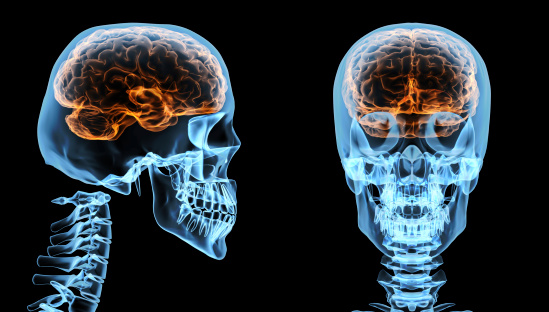 Focal seizures, also called partial seizures, occur when epileptic activity takes part in one localized part of the brain.
Focal seizures, also called partial seizures, occur when epileptic activity takes part in one localized part of the brain.
If you’ve never had one before, it can be quite scary, confusing, and cause for concern. If you’re asking: “What is a focal seizure?” that’s really the best way to put it.
But when it comes to focal seizure treatment, the answer is not quite as easy. Where the focal seizure occurs in the brain will ultimately determine the symptoms experienced and if and how it can be treated.
What Causes Focal Seizures?
There are a number of causes of focal seizures, and different conditions and situations can induce one. Although it can be very difficult to determine the exact cause of a seizure—especially if it’s the first—some possible causes of partial seizures include:
 Epilepsy
Epilepsy- Kidney or liver failure
- Hypertension
- Drugs (legal or illegal)
- Brain and head injuries
- Meningitis
- Congenital brain defects
- Stroke
- Poisoning (from bites, stings or ingestion)
- Heat stroke
- Low blood sugar
- Withdrawal from drugs or alcohol
Not all of these causes will have the same symptoms. Focal seizure symptoms are determined by the lobe where it occurs.
Types of Focal Seizures (Partial Seizures)
There are three types of focal seizures you can experience, each being slightly different—and more dangerous—than the next. In order from smallest to biggest, or least severe to most, they are:
1. Simple Partial Seizures
Localized to one area on one side of the brain, but may potentially spread to others. Consciousness is maintained during a simple partial seizure.
2. Complex Partial Seizures
Originate in one area of the brain and affect consciousness. In other words, consciousness may be lost.
3. Partial Seizures that Secondarily Generalize
When the seizure spreads to both sides of the brain and has the potential to affect the entire brain and body.
Focal Seizures Signs and Symptoms
Signs and symptoms will differ depending on the lobe in which the seizure takes place. A seizure can occur in four different lobes, and these are the common symptoms of each:
Temporal Lobe
- Can last for 30 seconds to two minutes
- Feeling frightened
- Experiencing deja-vu
- Strange tastes or smells of something that isn’t there
- Rising sensation in the stomach
- Staring
- Lip smacking
Frontal Lobe
- Usually less than 30 seconds and typically occurs during sleep
- May be mistaken for mental health issue or sleep problem
- Moving head or eyes to one side
- Not being aware of surroundings
- Difficulty speaking
- Uncontrolled screaming, swearing, or laughing
- Unusual body movements or poses
- Repeated, uncontrolled movements like rocking, pedaling, or pelvic thrusting
Parietal Lobes
- Can last from a few seconds to a few minutes
- Feelings of numbness, tingling, heat, or pressure
- Marches down from head to arms, hands, and legs
- Sexual sensations
- Feelings of bodily distortion
- Body feels like it is missing or you are detached from it
- Dizziness
- Hallucinations or vision distortions
- Difficulty with comprehension
Occipital Lobes
- Lasts for a few seconds
- Hallucinations
- Impaired vision
- Images being replayed repeatedly
- Eye pain
- Sensations that your eyes are moving
- Uncontrolled sideways eye movements
- Rapid eye movements
- Fluttering eyelids
How to Treat Focal Seizures
 Unfortunately, you can’t treat a seizure when it’s underway—even if you have remained conscious. The seizure must run its course, and treatment should be sought afterwards.
Unfortunately, you can’t treat a seizure when it’s underway—even if you have remained conscious. The seizure must run its course, and treatment should be sought afterwards.
If possible, try to get to an area where you don’t risk injury from falling or breaking something. If you can get to a chair and sit, this can also help minimize the risk of injury.
If you’re epileptic and prone to seizures, it’s a wise idea to safety proof your home and even consider wearing a bicycle helmet. Protecting yourself when you’ve lost consciousness or control is really all you can focus on.
Treatments for focal seizures are best discussed with a doctor. Risk reduction depends on determining the cause and moving forward from there. A treatment plan will likely rely on medications that can treat the root causes of seizure, if it has been identified.
How Can You Prevent Focal Seizures
You can’t really prevent a focal seizure without addressing the root cause. This means meeting with a doctor or medical professional to understand why they occur, and then building a treatment plan that pertains to your needs. This often involves mediation.
Because heart conditions and blood pressure can lead to partial seizures, trying to live a healthy lifestyle that features plenty of sleep, activity, and a healthy diet may help reduce the chances of focal seizures. Finding ways to minimize stress may also help, so looking into exercise, mindfulness, yoga, a new bed or other stress-reducers might also help. It’s important to note, however, that none of these lifestyle suggestions are guaranteed to work.
What To Do If You See Someone Having a Seizure
If you see someone having a seizure, it’s important to be aware that you cannot do anything to help them “snap out of it.” While the seizure is running its course, try to stay away from the person to avoid getting hit. The person will likely be undergoing uncontrolled muscle contractions and hitting themselves and objects around them.
If safe, remove objects from the area that can be broken and lead to injury and make sure to tell other individuals nearby to stay away. Unfortunately, there is nothing you can do to speed up or stop a person experiencing a seizure.
What You Can Do
If you’ve been experiencing partial seizures or think you might be at risk, the best thing you can do is get to the doctor and talk about. Getting treatment as soon as possible is the best way to manage the condition and find out what might be causing it. Only after the root cause has been determined can any positive action be taken. If you’ve got any of the risk factors outlined above, it might also be worthwhile talking to your doctor about concerns, or even take the steps to make your home a little safer in the case of a partial seizure.
Related:
- Man Suffers Seizures Triggered By Sudoku Puzzles
- Creatine Monohydrate: Could It Boost Brain Health?
- A Healthy Brain Starts With a Healthy Heart
- Alzheimer’s Sufferer Joe Kapp Will Donate Brain for Dementia Research
